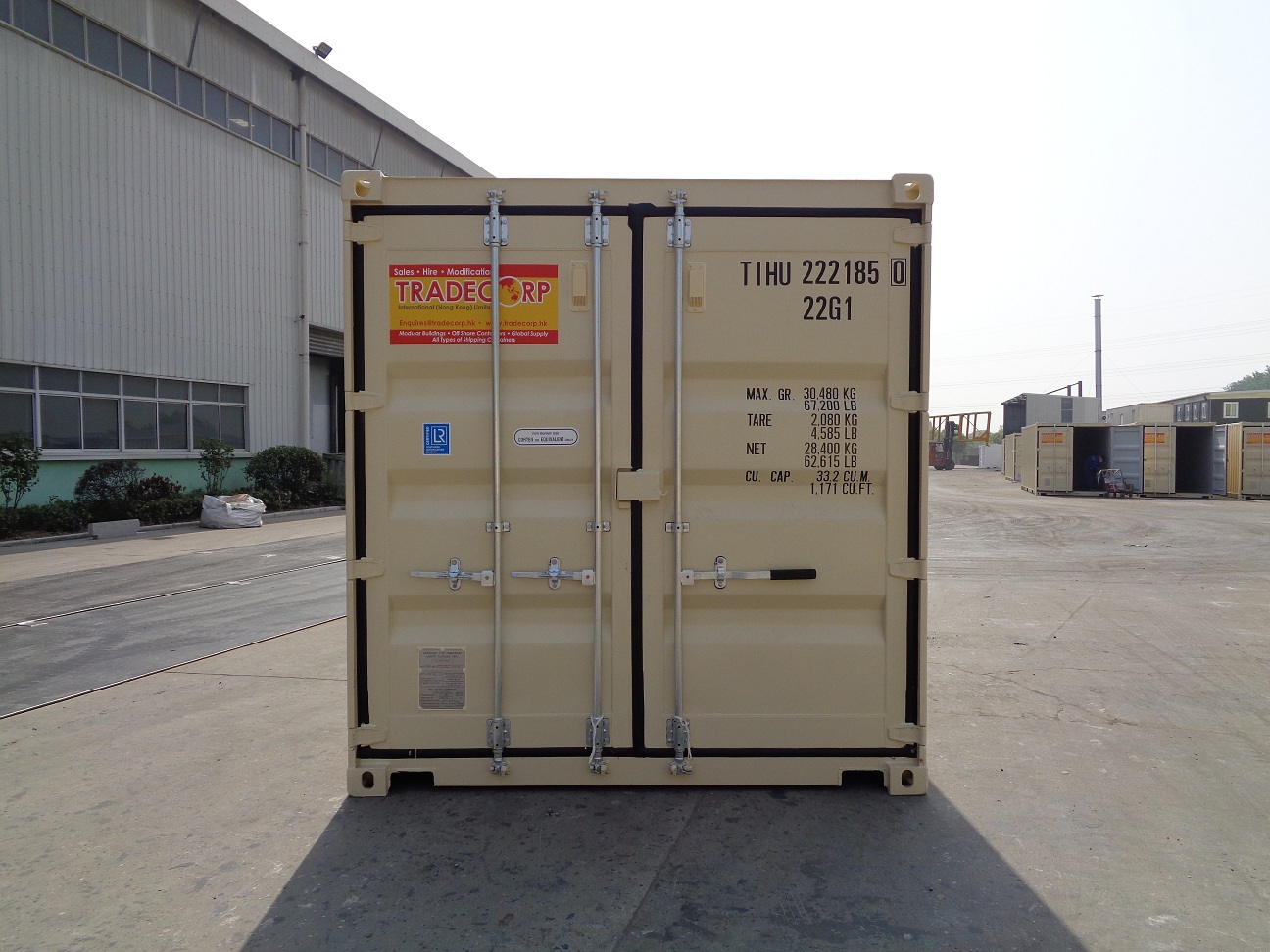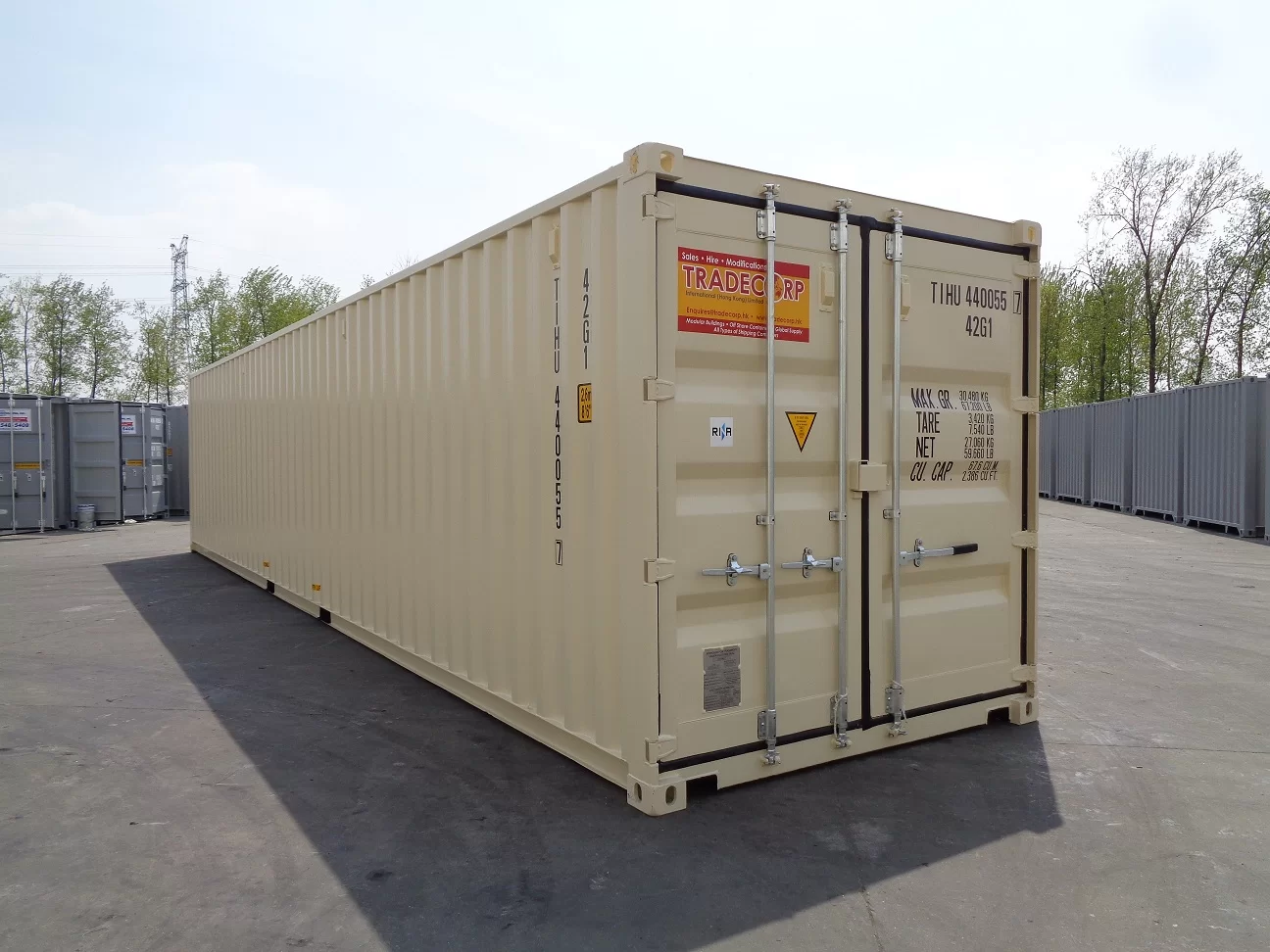How much does a shipping container weigh? Well, the answer differs depending on which container you’re referring to. Depending on how much cargo they carry and their specifications, the container’s weight can differ significantly across the board.
Even having a slight height difference can contribute to that weight difference. As a result, it’s important to know how much does a shipping container weigh based on its type.
Also Read: How Many Vehicles Can Fit in a Shipping Container Garage?
Why is Weighing a Shipping Container Important?

Weighing a shipping container is not just a matter of technicality. It’s important for so many reasons, including safety, regulatory compliance, cost efficiency, and proper cargo distribution.
Safety and Compliance
Overloaded containers can cause serious accidents during transportation. Roads, bridges, and cargo ships have weight limits, and exceeding them can lead to:
Structural damage to vehicles and ships
Excessive weight can stress transportation infrastructure, leading to mechanical failures, cracks in bridges, or even the sinking of ships in extreme cases.
Increased fuel consumption
Heavier loads require more energy to move, increasing fuel costs for trucking and shipping companies.
Higher risks of accidents
Unstable or overloaded containers can cause trucks to tip over or cargo to shift dangerously at sea, posing safety risks to operators and the public.
To prevent these risks, international regulations like the SOLAS (Safety of Life at Sea) Convention mandate accurate container weight reporting before shipping. Failure to comply can result in serious penalties or rejected shipments.
Preventing Penalties and Delays
Ports and shipping companies enforce strict weight limits to prevent damage to their infrastructure and ensure smooth logistics operations. If your container exceeds its weight restrictions, you may face:
Hefty fines
Overweight containers may incur surcharges from shipping lines, ports, or regulatory agencies.
Delays in shipping schedules
If a container is flagged as overweight, it may be removed from a ship’s loading schedule, causing costly delays.
Cargo rejection
Some ports refuse to handle overweight or improperly declared shipments, requiring businesses to make costly adjustments.
Efficient Load Distribution
Properly distributing weight across trucks, ships, and trains is critical to maintaining stability and preventing accidents. Poorly balanced containers can cause:
Cargo shifts during transport
If weight is not evenly distributed, items inside the container may move unexpectedly, leading to damage or dangerous imbalances.
Tipping accidents
Trucks or railcars with uneven weight loads are at a higher risk of rolling over.
Increased wear and tear on equipment
Unbalanced loads can stress tires, suspension systems, and chassis, leading to higher maintenance costs.
By understanding and managing container weight, businesses can ensure smoother operations and safer transportation.
What are Tare Weight, Gross Weight, and Payload Weight?

Whenever you use shipping containers, you’d be sure to see these terms often written on their cargo doors. Detailing the container’s weight profile, tare, gross, and payload weights are some of the most important indicators of a container’s weight.
Tare Weight (Empty Weight)
The tare weight refers to the weight of an empty container, without any cargo inside. This includes the steel frame, flooring, and doors.
Gross Weight (Total Weight)
The gross weight is the total weight of the container when fully loaded. It includes both the tare weight and the cargo weight.
Payload Weight (Cargo Capacity)
The payload weight is the maximum weight of cargo that a container can hold. It is calculated using the formula:
Payload Weight = Gross Weight – Tare Weight
For example, if a 20ft container has a gross weight limit of 30,480 kg and a tare weight of 2,200 kg:
Payload Capacity = 30,480 kg – 2,200 kg = 28,280 kg
Factors Affecting a Shipping Container’s Weight

The following factors influence how much does a shipping container weigh during use or when unused:
Container Size and Type
Larger containers weigh more. A 40ft container is significantly heavier than a 10ft container due to additional materials used in its construction. Specialized containers, such as refrigerated (reefer) units, also have extra weight due to cooling systems.
Material and Construction
Most shipping containers are made of Corten steel, a durable and weather-resistant but relatively heavy material. Some specialized containers use aluminum, which reduces weight but may compromise durability.
Cargo Type
A container loaded with lightweight goods like clothing or electronics will weigh much less. Meanwhile, a container carrying heavy materials like machinery, steel beams, or construction equipment can have its weight significantly added.
Modifications and Additions
Converted containers like mobile storage units will weigh more due to the added insulation, interior walls, plumbing, and electrical systems.
Average Weights of Various Container Types
Below is a general breakdown of the tare weight, gross weight, and payload capacity of different container sizes:
|
Container Type |
Tare Weight | Gross Weight |
Payload Capacity |
| 8ft Container | ~1,300 kg (2,870 lbs) | ~10,000 kg (22,050 lbs) | ~8,700 kg (19,180 lbs) |
| 10ft Container | ~1,500 kg (3,300 lbs) | ~10,160 kg (22,400 lbs) | ~8,660 kg (19,100 lbs) |
| 20ft Container | ~2,200 kg (4,850 lbs) | ~24,000 kg (52,910 lbs) | ~28,280 kg (62,350 lbs) |
| 40ft Container | ~3,800 kg (8,380 lbs) | ~30,480 kg (67,200 lbs) | ~26,680 kg (58,820 lbs) |
| 53ft Container | ~4,800 kg (10,580 lbs) | ~32,500 kg (71,650 lbs) | ~27,700 kg (61,070 lbs) |
As we can see above, each container’s weight keeps increasing as its dimensions become larger. Considering this gradual change, you might want to change to a larger container if you think your current selection cannot withstand your cargo’s weight.
Container Weight Measurement Tools

Much like anything that requires measurement, shipping containers also have specialized weight measurement tools. Across the industry, the following tools are the most popular instruments people use to measure the containers’ weight:
Weighbridge
One of the most reliable methods is using a weighbridge, a large industrial scale capable of weighing entire trucks and their cargo.
Weighbridges are commonly found at shipping ports, logistics hubs, and industrial facilities, providing precise weight measurements that help ensure compliance with regulations.
Onboard Scales
Another method is the use of onboard scales, which are built into modern trucks and shipping vessels. These advanced weighing systems provide real-time weight measurements, allowing operators to monitor cargo weight and distribution continuously.
Some trucks are equipped with load sensors that measure the weight applied to each axle, ensuring that the total load remains within legal limits.
Portable Weighing Pads
Lastly, there are also electronic weighing pads. You can place them under a container’s corners to calculate the total weight. Portable weighing pads are especially useful for field measurements, where there is no access to large weighbridges.
How to Reduce the Weight of Containers

Reducing a container’s weight can help lower transport costs and improve efficiency. Here’s how:
Ensuring proper cargo distribution is one example. Even if a container remains within the allowable weight limit, an uneven load can cause stability issues, increasing the risk of tipping or cargo damage. Businesses should aim to distribute weight evenly inside the container to maintain balance during transport.
Minimizing excess packaging is another effective strategy. While packaging is necessary to protect goods, using excessive materials can add unnecessary weight. Opting for lightweight, durable packaging materials helps reduce the total load while still ensuring that cargo remains secure.
Additionally, companies shipping empty containers can consider using collapsible containers, which reduce both weight and space. These containers can be folded when not in use, allowing for more efficient transport and storage.
Also Read: How Many Containers On a Container Ship from Each Ship Type
Containers
By knowing how much does a shipping container weigh, we can make wiser business decisions in finding the best container for our business needs. To keep your cargo secure during freight, Tradecorp is ready to help you find a shipping container to meet your project’s requirements. Contact us today via our quote form, and we will respond immediately!


